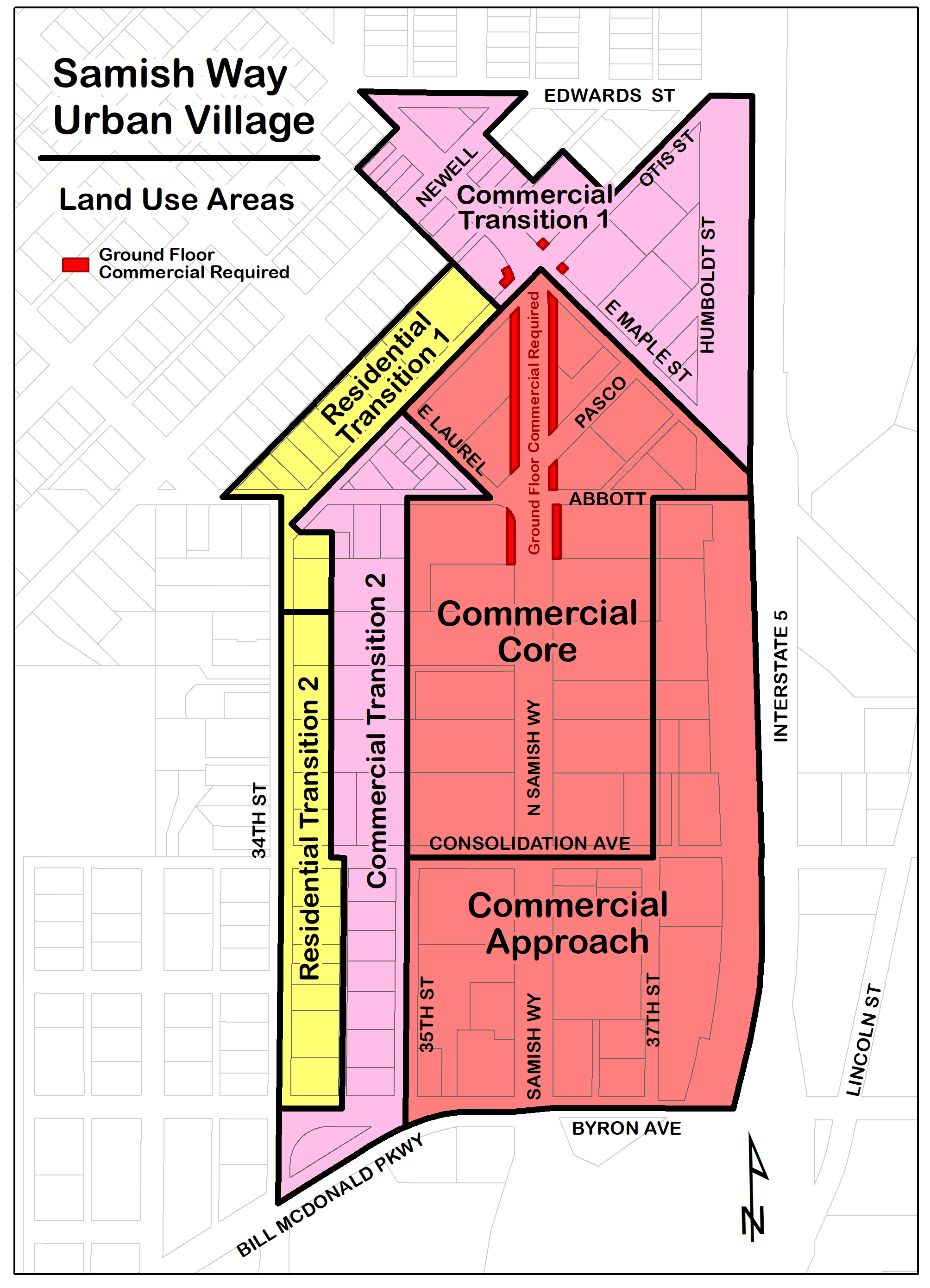20.37.110 Samish Way urban village – Establishment of boundaries and land use areas.
A. The boundaries of the Samish Way urban village and associated land use areas are hereby delineated as shown in Figure 20.37.110.
B. The Samish Way urban village is divided into three commercial areas (core, approach, and transition) and one residential area (transition). The purpose of the areas is to establish goals, policies and development regulations that require development to respond to desired intensity, physical characteristics and neighborhood scale. These areas are intended to ensure development is appropriately scaled and to encourage uses that are compatible with the surrounding neighborhoods.
1. Commercial Core. The commercial core area is intended to be the densest area within the urban village with the highest concentration of employment and housing. These areas are likely to have direct access to transit and a wide range of supportive land uses such as retail, office, recreation, public facilities, parks and open space. The pedestrian environment is emphasized in these areas.
2. Commercial Approach. The commercial approach area is intended to allow commercial uses similar to the core area, and less intensive mix of ground floor pedestrian-oriented uses such as offices and interspersed drive-through services such as gas stations, banks and fast food restaurants. Some light industrial and auto-oriented uses are allowed to continue due to proximity to I-5 and the auto focused history of the area.
3. Commercial Transition. The commercial transition areas are intended to allow commercial uses similar to the core and approach areas, but those with less noise and vehicular impacts on abutting residential areas. Height limits are lower to lessen the impact on the adjacent residential areas. Residential only buildings are allowed in the transition area; however, they should be designed with an active and direct interface with the street to support the pedestrian experience.
4. Residential Transition. The residential transition areas are immediately adjacent to existing single-family neighborhoods. A mix of residential housing types is encouraged to support the abutting commercial area and provide housing choices for people of various incomes and ages.
Figure 20.37.110 Land Use Areas

[Ord. 2019-12-038 § 2 (Exh. B); Ord. 2009-11-069].